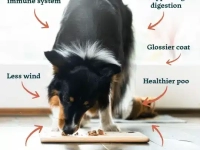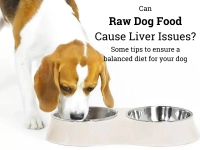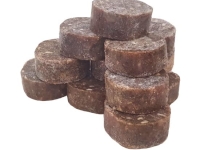Feeding Your New Puppy Raw Dog Food
In This Article...
THE OVERVIEW...
Transitioning to a raw dog food diet for your new puppy is something that can be easily managed. As new puppy owners, the choices you make today shape the health and vitality of your furry companion for years to come. This guide offers a roadmap to raw feeding, ensuring your puppy thrives on this nutritious path.
Understanding Raw Dog Food
What is a Raw Diet?
A raw diet consists primarily of uncooked meats, bones, and organs, presenting a stark contrast to conventional kibble which can often include 50% carbs, which effectively just sugar for your puppy. This natural approach mimics the ancestral diet of dogs, designed to support optimal health and wellbeing.
Benefits of Feeding Raw to Puppies
- Enhanced Digestion: Raw food is easier for puppies to digest, promoting nutrient absorption.
- Stronger Bones: The inclusion of raw bones aids in developing a robust skeletal structure.
- Healthier Coat: A diet rich in natural ingredients contributes to a lustrous, shiny coat.
- Better overall health: It is no secret that dogs fed exclusively kibble have been shown to have poorer health outcomes and a shorter life.
When to Start Feeding Raw
Ideal Age for Transition
Puppies can typically start their raw food journey as early as three weeks, though waiting until after weaning is common. Consulting with a veterinarian experienced in raw feeding is wise for tailored guidance.
Signs Your Puppy is Ready for Raw Food
Look for readiness cues: curiosity towards food, interest in chewing, and general health. If your puppy seems eager to explore new tastes, it might be time to transition.
Transitioning Your Puppy to Raw Food
Gradual Introduction
Begin the transition with a careful approach. Start with small amounts of raw food, gradually increasing as your puppy adjusts:
- Week 1: 25% raw, 75% kibble
- Week 2: 50% raw, 50% kibble
- Week 3: 75% raw, 25% kibble
- Week 4: 100% raw
Monitoring Your Puppy’s Response
Observe your puppy’s stool consistency and overall health throughout the transition. Adjust the raw food portion as necessary, ensuring your puppy remains comfortable and well-fed. Puppies are growing fast and need more food per kg than adult dogs to fully develop.
Selecting the Right Raw Food
Choosing Protein Sources
Opt for high-quality meats, such as chicken, beef, and lamb. Variety is key; rotating protein sources not only keeps meals interesting but also provides a broader range of nutrients.
Incorporating Bones Safely
Raw bones offer dental benefits and mental stimulation. As your puppy’s teeth develop, focus on soft raw, bones that are appropriate for your puppy’s size. Consider chicken necks as a good starting point. Never feed cooked bones, as they can splinter and pose a hazard.
Enrichment Activities for Your Puppy
Importance of Mental and Physical Stimulation
Engaging your puppy mentally and physically is crucial for healthy development. Enrichment activities help build confidence and prevent destructive behaviors. Using slow feeders or natural treats like Moo Tubes stuffed with raw food
Creative Ways to Keep Your Puppy Occupied
- Interactive Toys: Invest in toys that challenge your puppy’s problem-solving skills.
- DIY Activities: Create scent trails or hide natural treats or freeze dried food to encourage exploration.
Nutritional Balance in Raw Diets
Understanding Nutritional Needs
Puppies require a balanced intake of macronutrients—proteins, fats, and a small amount of complex carbohydrates (from leafy green veges), —as well as essential vitamins and minerals. A well-rounded diet is crucial for their growth and vitality.
Supplements to Consider
As homemade raw diets can sometimes lack certain nutrients, discussing potential supplements with your vet is advisable. Tailored advice will help ensure your puppy receives all necessary nourishment. If you are purchasing raw food from Kuri, we recommend rotating through our recipes to ensure that your puppy has variety of nutrients it needs.
Common Concerns and FAQs
Addressing Myths About Raw Feeding
Many myths surround raw feeding, including misconceptions about safety and nutritional adequacy. Empower yourself with knowledge to confidently navigate these discussions. Many vets do not recommend raw diets, but this is changing and there is growing evidence of the benefits of raw. You will find pet nutritionists and holistic vets are in favor of a balanced raw dog food diet.
Frequently Asked Questions
At what age can I start feeding my puppy raw food?
Puppies can start as early as three weeks, but consult your holistic vet for personalised advice or stop in to see the team at Kuri.
How do I transition my puppy from kibble to raw food?
Gradually introduce raw food over four weeks, monitoring your puppy’s health throughout. Check out our other posts on this for more information
What are the benefits of feeding my puppy a raw diet?
Raw feeding can lead to improved digestion, stronger bones, and a healthier coat and overall improved health.
Conclusion
Feeding your puppy raw food is a commitment to their health and happiness. With careful planning, you can provide a diet that fuels their growth and vitality. Consult with veterinary professionals for personalised advice and explore further resources on raw feeding.
What Next?
Subscribe for more expert insights on puppy care and nutrition. Share your experiences or questions about raw feeding in the comments below—your journey can inspire and assist others!
For more details on puppy training, visit Kuri Dog Training. If you’re ready to start your puppy on a raw diet, check out Ultimate Raw Puppy Dog Food for quality options. For a deeper understanding of raw feeding, explore Perfectly Rawsome’s Guide.








